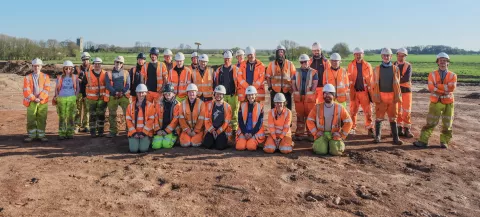Our people
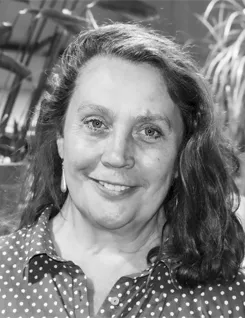
Natasha graduated with a BA (Hons) in Archaeology and Prehistory from the University of Sheffield, followed by an MSc in Osteology, Palaeopathology and Funerary Archaeology (University of Bradford). She started her archaeological career at the Museum of London and now has over 30 years of experience working in commercial archaeology.
Prior to joining Oxford Archaeology in 2016, Natasha was the senior osteoarchaeologist at the Cambridge Archaeological Unit for 20 years and has an extensive knowledge of the archaeology of Eastern England, particularly of burial archaeology.
In her current role, Natasha is responsible for co-ordinating the work programmes in both the Finds and Environmental Departments at Oxford Archaeology's Cambridge office, liaising with specialists within the organisation and externally. She also oversees the post-ex training of staff, specifically junior specialists. With her specialism in osteology Natasha contributes to the grey literature and publications programmes at OA and has a particular interest in cremation practices and Bronze Age and Iron Age funerary archaeology. She is a member of the British Association of Biological Anthropology and Osteoarchaeology (BABAO).

Ted has 10 years’ experience in commercial archaeology. Following a BA in Archaeology and Anthropology (Cambridge), Ted joined Oxford Archaeology's Cambridge office as an excavator. In 2016 he moved permanently into the Finds department. His current role is Finds Supervisor and Ceramics Specialist. His specialisms are in Fired Clay and Ceramic Building Materials analysis. In 2018, he completed an MA in Artefact Studies (UCL) where he formalised his finds training and developed skills in ceramic studies, petrography and elemental analyses. His main writing and research interests are in ceramic production sites, namely Roman pottery and tile kilns, as well as prehistoric to Medieval textile production tools and salt making.
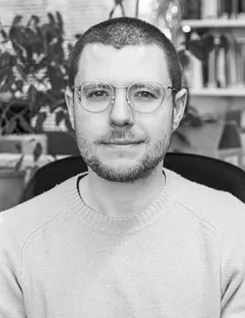
David gained his PhD in Archaeology from the University of Cambridge in 2021, for which he ran a project in northwest Kenya combining geoarchaeological, landscape survey and ethnographic techniques to investigate the ways in which both historic and contemporary settlements have shifted across the landscape. He joined Oxford Archaeology in October 2022 as a Geoarchaeology Supervisor and has been a Project Officer since June 2023. In this role he specialises in conducting thin-section micromorphology and geochemistry analyses on samples from across OA’s portfolio, as well as monitoring geotechnical works, supervising purposive borehole and auger surveys, and creating both site-specific deposit models and wider geoarchaeological landscape assessments, as well as actively contributing to several of OA’s ongoing research initiatives.
His primary interests include the role of micromorphology in addressing archaeological questions, the exploration of multi-scalar connections between archaeological sites and wider landscapes, theories of archaeological interpretation that extend ‘beyond the human’, and archaeology’s potential role within wider programmes of contemporary nature conservation. He also continues to conduct research in Kenya and maintains an active research publication output focusing on both UK and East African archaeology.
David is a Fellow of the Geological Society of London, an Honorary Research Fellow at the British Institute in Eastern Africa, a National Geographic Society Explorer, and an active member of both the Association for Environmental Archaeology and the Quaternary Research Association.
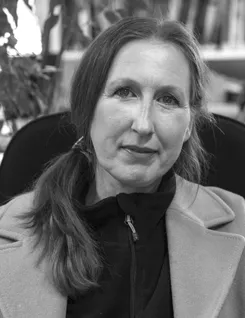
Elizabeth has a professional career spanning over 25 years in field, environmental archaeology, geoarchaeology, post-excavation analysis and project management. She has a BA (Hons) degree in Archaeology from the University of Wales College of Cardiff and an MSc in Geoarchaeology from the University of Reading. Having trained under Profs. J.G. Evans and M.G Bell, she specialises in geoarchaeology, predictive deposit modelling and malacology.
Elizabeth joined OA in 1996, having previously worked for archaeological organisations in Northeast England, the highlight of which was intertidal fieldwork on the Hartlepool submerged forest (Tees Archaeology). Whilst working for OA she has been involved in both research and developer-funded projects across the South, the Midlands, East Anglia, Northern England, France, and the Netherlands. She has worked on a range of multiperiod sites, with expertise in the Thames Valley, Greater London, Kent and Essex. She has extensive experience in the design and implementation of geoarchaeological investigations with deposit modelling on large infrastructure projects such as High Speed 1, High Speed 2, Heathrow Terminal 5, Crossrail, Thameslink, the Lower Thames Crossing and London Gateway Port.
She has a keen interest in natural history, wetland archaeology, coastal processes, and Quaternary climate change, much inspired from working as a student at Flag Fen. Elizabeth is an advocate of holistic and integrated approaches to archaeological and landscape investigation in which she has published extensively and contributed to various Historic England guidelines. She has had a long-standing involvement with Palaeolithic geoarchaeology, predominantly through her work in the Lower Thames in Kent (Ebbsfleet) and Essex (Purfleet). In 2016, she designed and managed, on behalf of Historic England, the production of the award-winning monograph, Lost Landscapes of Palaeolithic Britain. Collaborating with a team of lead academics, the book sought to synthesise and disseminate to the wider archaeological community the results of £8 million of funding from the Aggregates Levy Sustainability Fund (ALSF).
Elizabeth has led the in-house Geoarchaeology Team at OA since its establishment in 2003, a specialist hub that carries out borehole and geophysical surveys, LiDAR interpretation, sediment analysis, deposit modelling, GIS analysis and integrated landscape syntheses, from site to regional scale.
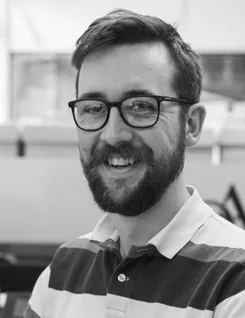
Ben has worked in commercial archaeology for over 10 years, specialising in Geomatics for most of that time. His work covers CAD and GIS data processing, 3D modelling and photogrammetry, and field survey. He has aided in developing several of the survey workflows at Oxford Archaeology and is a qualified UAV pilot, with over 7 years’ experience of flying drones.
Prior to joining Oxford Archaeology, Ben completed a BA in Archaeology at the University of Southampton, followed by an MA in Palaeolithic Archaeology and Human Origins, then completed a DPhil (PhD) at the University of Oxford. He has worked on a wide variety of commercial sites and projects, across the UK and Europe, including Croatia, Norway and Spain.
His areas of interest include 3D reconstruction and modelling of archaeological landscapes and objects, the Lower & Middle Palaeolithic periods and their lithic tool technologies, GIS data analysis and mobile laser scanning.
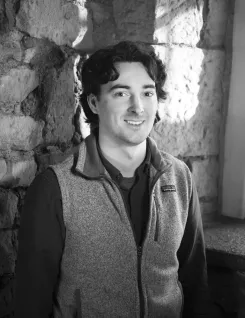
Conor works in Lancaster’s Geomatics team, as a GIS specialist. He has a BA (Hons) in History and an MA in Digital Humanities, both awarded by Lancaster University. Prior to joining Oxford Archaeology, he worked as a GIS Consultant on major infrastructure projects across North West England. His work covers all aspects of GIS, from mobile data capture, data processing, data analysis, and GIS-based outputs. He is a qualified UAV pilot and is responsible for the UAV operations out of OA’s Lancaster office.
His areas of interest include remote sensing for archaeological prospection (especially multispectral imagery, hyperspectral imagery, and vegetation indices), 3D modelling of archaeological landscapes and artefacts, and the uses of digital technology for outreach purposes. More broadly, he is interested in developments in the digital humanities, including spatial analysis, network science, archaeological big data, and geographical text analysis.
A classical Mediterranean archaeologist at heart, since joining OA Conor is developing knowledge across all periods of British archaeology, but particularly in prehistory.
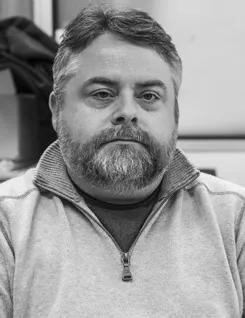
Gary studied archaeology in Cardiff and UCL, where his interest in prehistory coincided with the development of GIS and its use the spatial analysis of past landscapes.
For over 10 years as a GIS specialist within Geomatics, Gary's role at Oxford Archaeology developed along with the discipline, undertaking various aspects of GIS management and analysis. He was also leading in the integration of new methodologies, such as photogrammetry into Oxford Archaeology’s geomatics workflows.
Since then, Gary has moved his focus on the integration digital archaeological data within the company, leading him to take the position of Digital Development Manager at Oxford Archaeology. In this role he focuses on increasing the accessibility of OAs digital output, including the development of Oxford Archaeology’s Digital Recording System and WebMap toolkits.
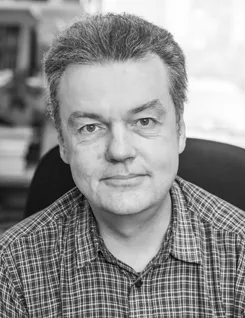
Matt has been involved with archaeology for over thirty years. He has a BA in Archaeology from UCL Institute of Archaeology (1992) and an MSc in GIS from UCL’s Department of Geomatic Engineering (1998). He has worked on a wide variety of sites in the UK, Europe and in the Middle East. He has been Head of Geomatics since 2006 and has worked in the Geomatics Department at Oxford Archaeology since its inception in 2001.
He contributes to projects which involve historic landscape survey and metric survey of earthworks and buildings, as well as many that concern heritage management and environmental assessment. Among other innovations, he has been involved with developing the application of spatial techniques for archaeological use. This has given him comprehensive experience of applying geomatics to heritage and archaeology.

